When I became USA Today’s tennis correspondent in 1986, good fortune rolled through my life for the next 15 years, fulfilling dreams long deferred in my career as a journalist and as a tennis aficionado. The new job afforded me the opportunity to watch routinely – from courtside seats – several of the game’s all-time great champions compete against one another in the sports’ most prestigious stadiums, including the four majors – Australian Open, French Open, Wimbledon and U.S. Open.
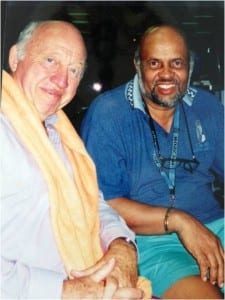 Often times Bud Collins, the sportswriter I had admired from a far for so many years, sat nearby, occasionally in the next seat. We saw Becker vs. Edberg, Sampras vs. Agassi, Graf vs. Navratilova, Seles vs. Graf, Serena vs. Hingis, Venus vs. Davenport. When the matches ended, we chatted with the winners, while they were still basking in the warmth of victory, and, later, with the losers, their eyes still pained by missed shots on key points or thoughts of what might have been. We’d then spend the next hour or so crafting a story to share the next day with our readers. What a gig, and what a wonderful life for someone like me who had learned to play and love the game during the era of racial segregation when tennis mostly was a ‘whites only’ affair.
Often times Bud Collins, the sportswriter I had admired from a far for so many years, sat nearby, occasionally in the next seat. We saw Becker vs. Edberg, Sampras vs. Agassi, Graf vs. Navratilova, Seles vs. Graf, Serena vs. Hingis, Venus vs. Davenport. When the matches ended, we chatted with the winners, while they were still basking in the warmth of victory, and, later, with the losers, their eyes still pained by missed shots on key points or thoughts of what might have been. We’d then spend the next hour or so crafting a story to share the next day with our readers. What a gig, and what a wonderful life for someone like me who had learned to play and love the game during the era of racial segregation when tennis mostly was a ‘whites only’ affair.
Besides establishing relationships with tennis superstars, I also had the pleasure of working alongside Bud, the game’s fancy pants superstar journalist/broadcaster and good will ambassador. Bud was 86 when he died last month.
Even when wearing his bowtie and colorful outfits, Bud loomed a notch or two above the rest of us. He was the consummate tennis journalist who exuded quintessential grace and charm. New York Daily News columnist Mike Lupica once described Collins as “…the best friend tennis ever had in this country as a writer and as a broadcaster.” He was indeed, and much more.
From my perspective he helped ‘Grow the Game’ long before the phrase became the United States Tennis Association’s (USTA) catchiest slogan. Bud came into my life in 1972 as a broadcaster when he and all-time great Althea Gibson, were PBS commentators during the American Tennis Association (ATA) men’s national championship final between Horace Reid and Arthur Carrington. Reid defeated Carrington in the final. Carrington, a fellow Hampton University alumnus (Go Pirates!), claimed the title the following year. The predominantly black ATA has yet to become a household name in the mainstream sports world, but even back then Bud knew of its history and through his commentary and analysis eagerly introduced the organization and its top players to a wider tennis audience. In describing the action between the two players, Bud was critical when necessary, buoyant in his praise when impressed but always authentic, concise and playful, just as he was during his ‘Breakfast-and-Wimbledon’ years with NBC.
I had the pleasure of traveling the world with Bud, a Boston Globe columnist and NBC’s tennis analyst, covering tennis events in Paris, London, Barcelona, Zimbabwe, etc. Our desks in the press rooms at the major events were in the same row, a few seats apart. The first day of nearly every major event tended to be ‘talk-to-Bud day’ for local media. Home town newspaper reporters lined up at his desk, seeking his comments on the favorites – Sampras, Seles, Graf, Agassi . Occasionally, some asked him to share tidbits regarding the off-the-court escapades of some of the tours controversial pros. Camera crews, seeking sound bites for their local news or sports shows, came later. Bud turned some of them away, but only when he was pressed to meet a Boston Globe deadline or beckoned by NBC.
His willingness to help his colleagues at every level acquire a better understanding and appreciation of the game seemed endless. He certainly helped me ‘Grow the Game’ on several occasions, even when I didn’t see the big picture. A few examples:
- I became a willing victim of a Bud Collins charm attack in the early 1990’s when he, along with John Feinstein coaxed me into becoming Feinstein’s successor as president of the United States Tennis Association (USTWA). Feinstein, of the National Sports Daily and I then were the only full-time tennis writers working for nationally distributed daily newspapers in the United States. Bud thought it was important for the USTWA to have dedicated tennis journalists in leadership positions on its staff.
- Bud wrote back-cover blurbs for my tennis books, Zina, My Life in Women’s Tennis, which is the life story of Zina Garrison, a former top-ranked tennis pro and Whirlwind, the Godfather of Black Tennis, a biography of Dr. Robert Walter Johnson, the Lynchburg, Va. physician most responsible for the development of many of the game African American pioneer players/pros, including all-time greats Althea Gibson and Arthur Ashe. Bud counted Arthur among his most important personalities. When he released the second edition of his book, Bud Collins’ Modern Encyclopedia of Tennis (with Zander Hollander) in 2004, the dedication page included a photo of Ashe, who had died a year earlier, with this inscription: “For the heroic Arthur Ashe, who showed us that sportsmanship even in a highly competitive game and world is a strength, not a weakness.
- He supported my mission to have the game’s leadership recognized Dr. Johnson’s contributions and achievements by inducting him into the International Tennis Hall of Fame (ITHF) as a contributor. When Dr. Johnson’s nomination was rejected in 2005, Bud queried the dissenting committee members regarding their vote. “The European committee members didn’t vote for him because they said they didn’t know this fellow,” said Bud, with a subtle smile. Others including Congressman John Lewis, joined the fight to get Dr. Johnson’s his due. Rep. Lewis documented his support for the second nomination of Dr. Johnson’s Hall of Fame induction in the Congressional Record. Soon after, Dr. Johnson finally received the recognition he deserved. In July of 2009, he was formally inducted into the ITHF in Newport, RI as a contributor.
- A stickler for accuracy, Bud encouraged his colleagues to refer to the four legs of the Grand Slam – Australian Open, French Open, Wimbledon and U.S. Open – as major events, not Grand Slam events. Bud preached that when a player won Wimbledon, he or she won a major title, not a Grand Slam The term Grand Slam champion, he argued, should be used only when a player wins the four majors in a calendar year. (You might have noticed that in the first paragraph of this blog, I used the term ‘majors’ not Grand Slams in describing Australian Open, French Open, etc.) However, I didn’t always follow Bud’s Grand Slam doctrine when I was with the paper. Editors everywhere, I suspect, believe Grand Slam title is a far sexier phrase than major title. That’s just a guess.
What’s not a guess is how much the tennis world will miss Arthur Worth ‘Bud’ Collins, who, among other things, played a mean game of tennis in his bare feet. Bud teasingly referred to himself as a ‘hacker.’ Actually, he was more of a heck-of-a-player than a hacker. He teamed with Janet Hopps to win the U.S. Indoor mixed doubles championship in 1961 was a French Open Senior finalist (with Jack Crawford) in 1975. In 1994 Bud became the first journalist inducted into the tennis Hall of Fame in Newport, RI and last September, the USTA honored him by naming the press center the Bud Collins’ U.S. Open Media Center. Bud and his wife, Anita, attended the ceremony.
Put simply, he was the real deal as a journalist and as a man. He was the real Mr. Tennis. Thanks for everything, Bud.
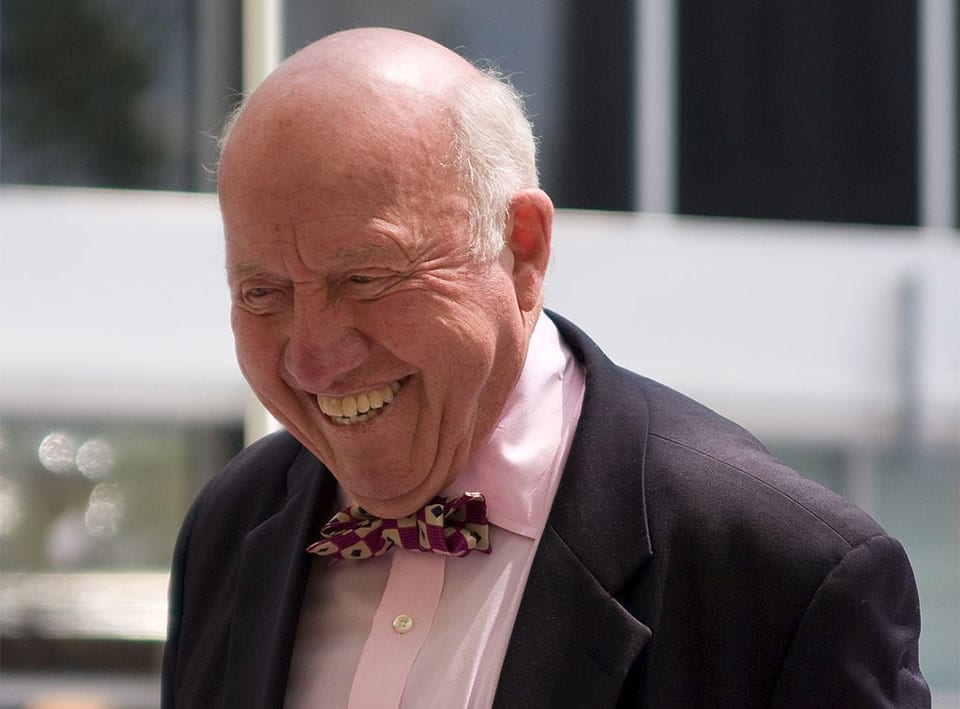
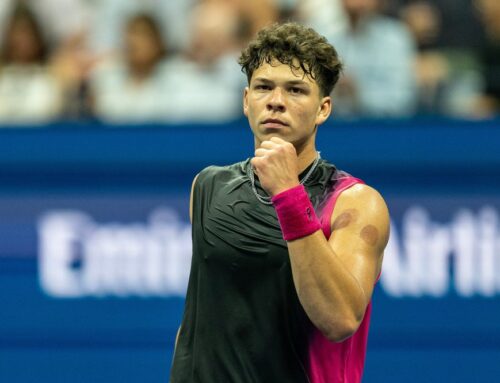
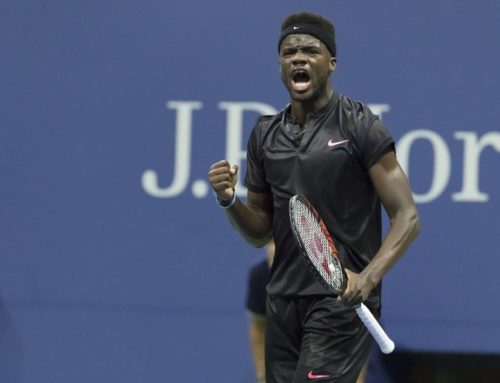
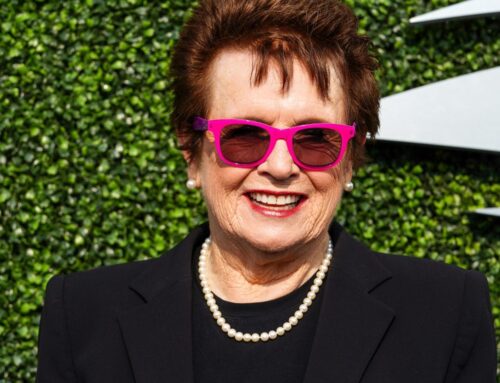

Leave A Comment